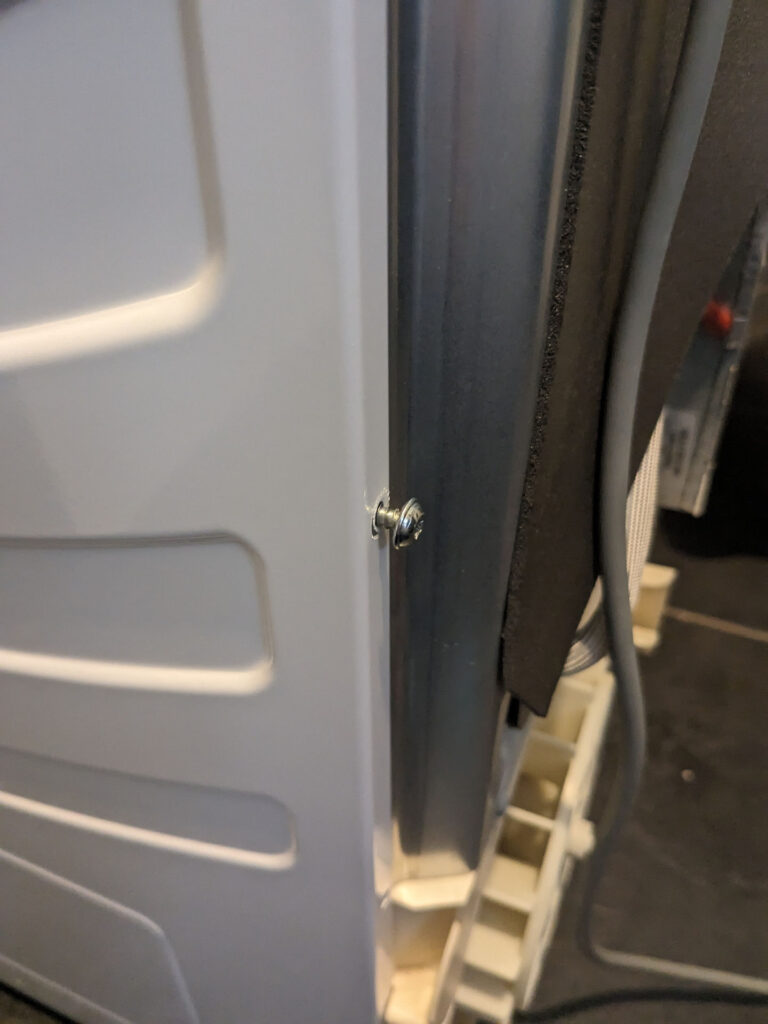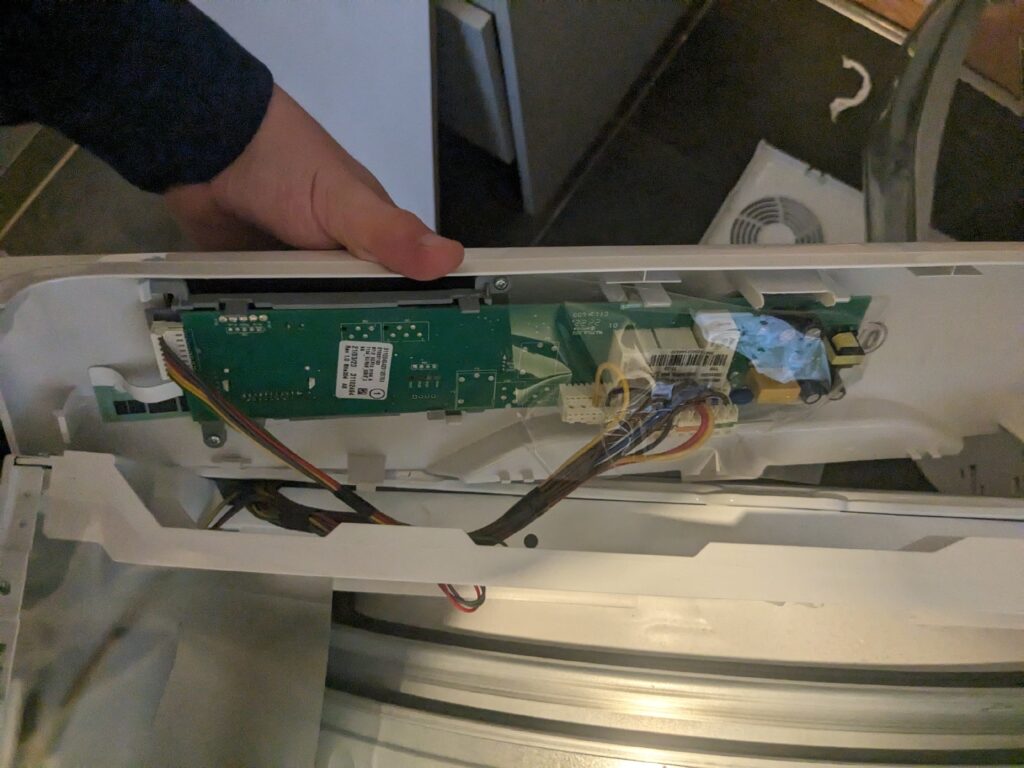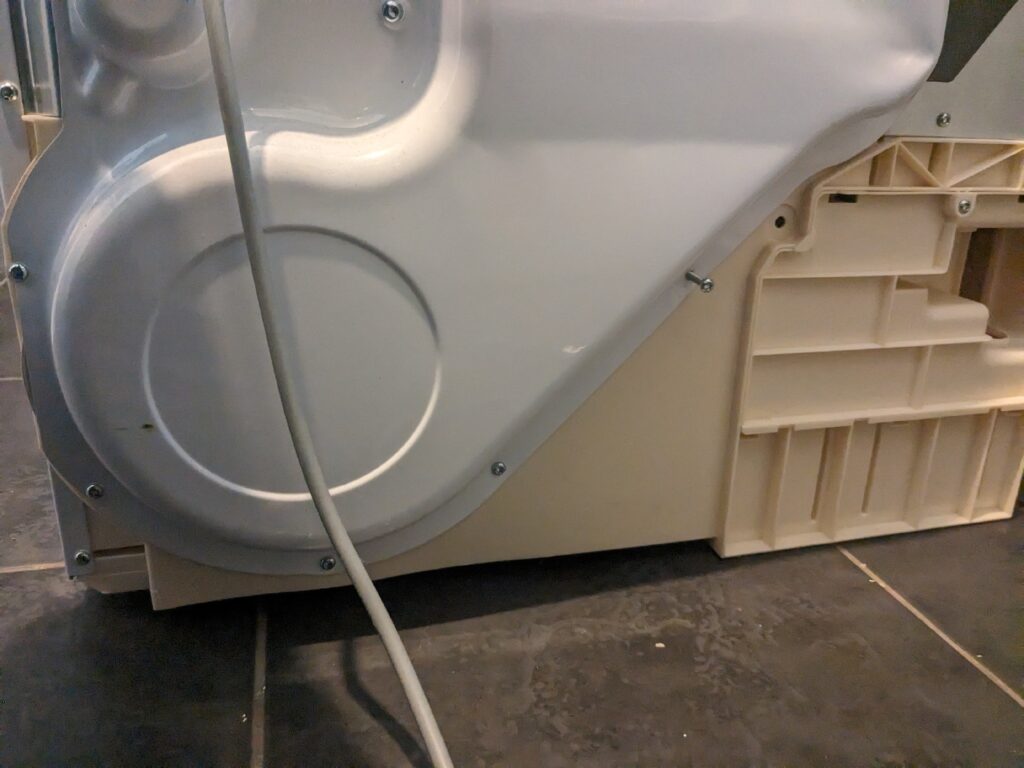The hardest part of a project is never the project itself, but rather the documentation surrounding it. In my effort to increase my blogging efforts, I’ve decided to start off with the tale of a side project of recent. Hopefully in the coming months I will have the chance to properly document everything.
The Problem
Every project of mine, big or small, starts with a problem. It can be almost anything, as long as it is possible to solve (or at least attemptable). This time, the problem came from within my own family, in the form of a newly broken tumble dryer.
I often say that a good tech minded person can fix anything, but I would be lying if I said that “household appliance repair” didn’t seem initially outside my comfort zone. Either way, through rigorous googling and an application of prior knowledge, I embarked on my journey into being a handyman.
The code blocking our way was an “E5”, and initial searches effectively boiled down to a thermostat or condenser issue. Now at the time I had no idea how the condensing system worked, but the thermostat issue actually reminded me of a previous tech item. The year before a plumber had replaced our shower, which failed to heat up any longer. I was able to keep the broken shower, and quickly tore it apart to find the thermostat covered in minerals from the water. As expected, when checked with a multimeter, it was stuck open, preventing the heater from turning on.
So, knowing how the thermostats in these devices operate, I decided that my best course of action would be to start by getting to the thermostat on the rear of the dryer, and attempting to check it before continuing on.

After accessing the back, and giving the thermostat a good thonk (resulting in a satisfying click, and presumably a successful reset), I was able to get the thermostat to read properly with my multimeter. It was also at this point I realised I had forgotten to actually check it before resetting, so I still couldn’t confirm that I had actually fixed it. In the interest of safety, I didnt wish to have live wires exposed in my kitchen, so I couldnt even test if the error was gone without reassembling everything.

In the interest of certainty, I stripped the whole thing to its base components, to get access to the condensing system so that I could clean it out. Even if it was not the cause of the issue, being able to clean deep inside the tumble dryer will definitely extend its lifespan, and I would really rather not have to break it down to bits again… I never like to do things in half measures, so when I have to strip a tumble dryer, I will strip a tumble dryer.

The condenser did have the expected fluff and dirt water in it, but not nearly as bad as I was anticipating. So it was probably a little overkill to take it out.
In the end though, I can confirm that the mysterious E5 error did disappear. Whether it was something I did, or simply the act of stripping everything down and rebuilding it, I cannot tell you (A surprising amount of broken things will just work when reassembled), but either way, my parents can sleep happy now knowing they have dry clothes, and won run the risk of burning the entire house down (plus we saved a lot of money on calling somebody out!).
That’s all, folks!
Anyway, I hope you enjoyed my little tale. I think the key thing to take from it is that with determination and logic, you can figure out any problem, even if it revolves around you stripping a tumble dryer on a damp kitchen floor at 9PM. Hopefully my next post will be a bit more technically interesting….

